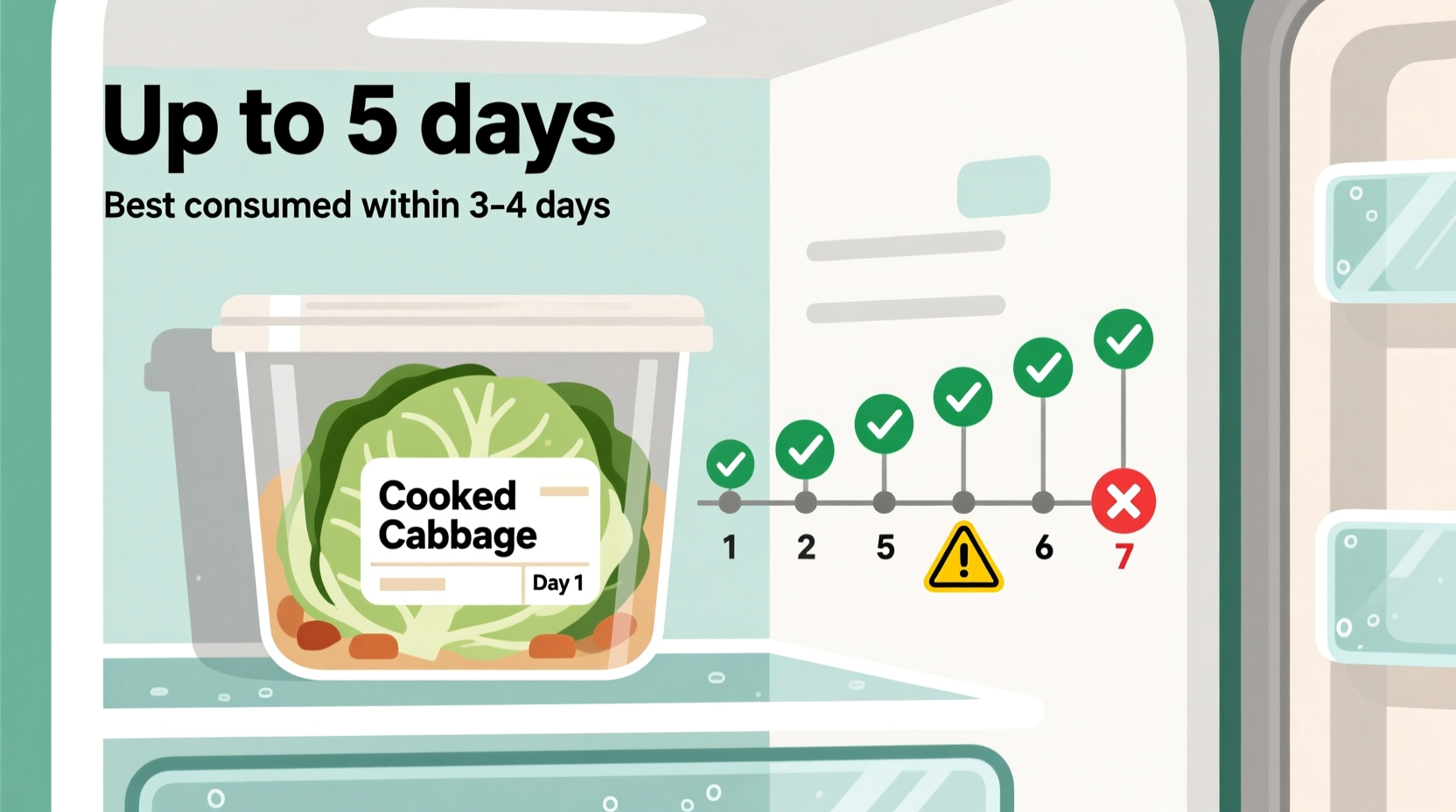Discovering that your perfectly cooked cabbage has spoiled can be frustrating—and potentially dangerous. Understanding the exact shelf life of cooked cabbage helps you minimize food waste while keeping your family safe. In this guide, you'll learn not just how long cooked cabbage stays fresh in the fridge, but exactly what factors extend or shorten its lifespan, clear spoilage indicators to watch for, and professional storage techniques that maximize freshness.
Why Proper Cooked Cabbage Storage Matters for Your Health
When cooked cabbage exceeds its safe storage window, it becomes a breeding ground for harmful bacteria like Salmonella and Listeria. According to the USDA Food Safety and Inspection Service, cooked vegetables enter the "danger zone" (40°F-140°F) where bacteria multiply rapidly after just two hours at room temperature. Proper refrigeration slows this process significantly, but doesn't stop it completely.
The moisture content in cooked cabbage creates an ideal environment for microbial growth. Unlike raw cabbage which maintains cellular structure, cooking breaks down cell walls, releasing water that bacteria thrive in. This explains why cooked cabbage shelf life is substantially shorter than raw cabbage (which can last 2-3 weeks refrigerated).

Maximum Freshness Timeline: Cooked Cabbage Refrigeration Guide
While the standard recommendation is 3-5 days, several factors influence whether your cooked cabbage will last the full five days or spoil sooner. Temperature consistency, storage method, and initial cooking technique all play critical roles.
| Storage Condition | Maximum Safe Duration | Quality Preservation |
|---|---|---|
| Properly cooled, airtight container, 35-40°F (1-4°C) | 5 days | Maintains texture and flavor |
| Loose covering or partial container, 40-45°F (4-7°C) | 3 days | Slight texture degradation |
| Left at room temperature >2 hours before refrigerating | 2 days | Noticeable quality decline |
| Added sauces or dressings (mayonnaise-based) | 3 days | Rapid texture breakdown |
This USDA-recommended storage chart demonstrates why proper technique matters. The 5-day maximum applies only when cabbage has been cooled rapidly after cooking and stored in optimal conditions. Many home cooks unknowingly shorten their cooked cabbage's shelf life through common mistakes like storing while still warm or using inappropriate containers.
4 Clear Signs Your Cooked Cabbage Has Spoiled
Don't rely solely on the calendar—your senses provide the most reliable indicators of spoilage. Watch for these unmistakable warning signs:
- Visual changes: Yellow or brown discoloration spreading beyond initial cooking effects, especially at edges
- Texture deterioration: Slimy film developing on surface or throughout the cabbage
- Odor development: Sour, unpleasant smell distinct from cabbage's natural sulfur notes
- Mold appearance: Any visible fuzzy growth (white, green, or black)
When in doubt, throw it out. The FDA Food Code emphasizes that "no amount of reheating eliminates toxins produced by bacteria once food has spoiled." This critical food safety principle means that even if you don't see obvious spoilage signs, consuming cabbage beyond the 5-day window risks foodborne illness.
Professional Storage Techniques for Maximum Freshness
Extend your cooked cabbage's shelf life to the full 5 days with these chef-approved methods:
Cooling Process Matters Most
Never place hot or warm cabbage directly in the refrigerator. The FDA recommends cooling cooked food within two hours (one hour when room temperature exceeds 90°F). Spread cooked cabbage in a thin layer on a baking sheet to cool rapidly before transferring to storage containers. This prevents condensation buildup that accelerates spoilage.
Container Selection Guidelines
Glass containers with airtight seals outperform plastic for cooked cabbage storage. The non-porous surface prevents odor absorption and maintains consistent temperature. Fill containers leaving no more than 1 inch of headspace—too much air promotes oxidation while too little space causes pressure buildup.
Temperature Verification
Your refrigerator's temperature display may not reflect actual conditions. Place an independent thermometer in the main compartment to verify it maintains 40°F (4°C) or below. The CDC confirms that every degree above 40°F doubles the rate of bacterial growth in perishable foods.
Frequently Asked Questions About Cooked Cabbage Storage
Can I freeze cooked cabbage to extend its shelf life?
Absolutely. Properly frozen cooked cabbage maintains quality for 10-12 months. Cool completely, portion into freezer-safe bags removing excess air, and freeze flat for quick thawing. Thaw overnight in the refrigerator before reheating.
Does adding vinegar during cooking extend refrigerator life?
Yes, acidic components like vinegar or lemon juice create a less hospitable environment for bacteria. Cabbage cooked with vinegar maintains freshness for the full 5 days, whereas plain cooked cabbage may only last 3-4 days.
What's the safest way to reheat refrigerated cooked cabbage?
Reheat to an internal temperature of 165°F (74°C) using a food thermometer. Microwave with a splash of water to maintain moisture, stirring every 30 seconds until thoroughly heated.
Can I still use cooked cabbage that's been refrigerated 6 days?
No. Consuming cooked cabbage beyond the 5-day maximum creates significant food safety risks. The USDA explicitly states that cooked vegetables should not be consumed after this timeframe regardless of appearance.











 浙公网安备
33010002000092号
浙公网安备
33010002000092号 浙B2-20120091-4
浙B2-20120091-4